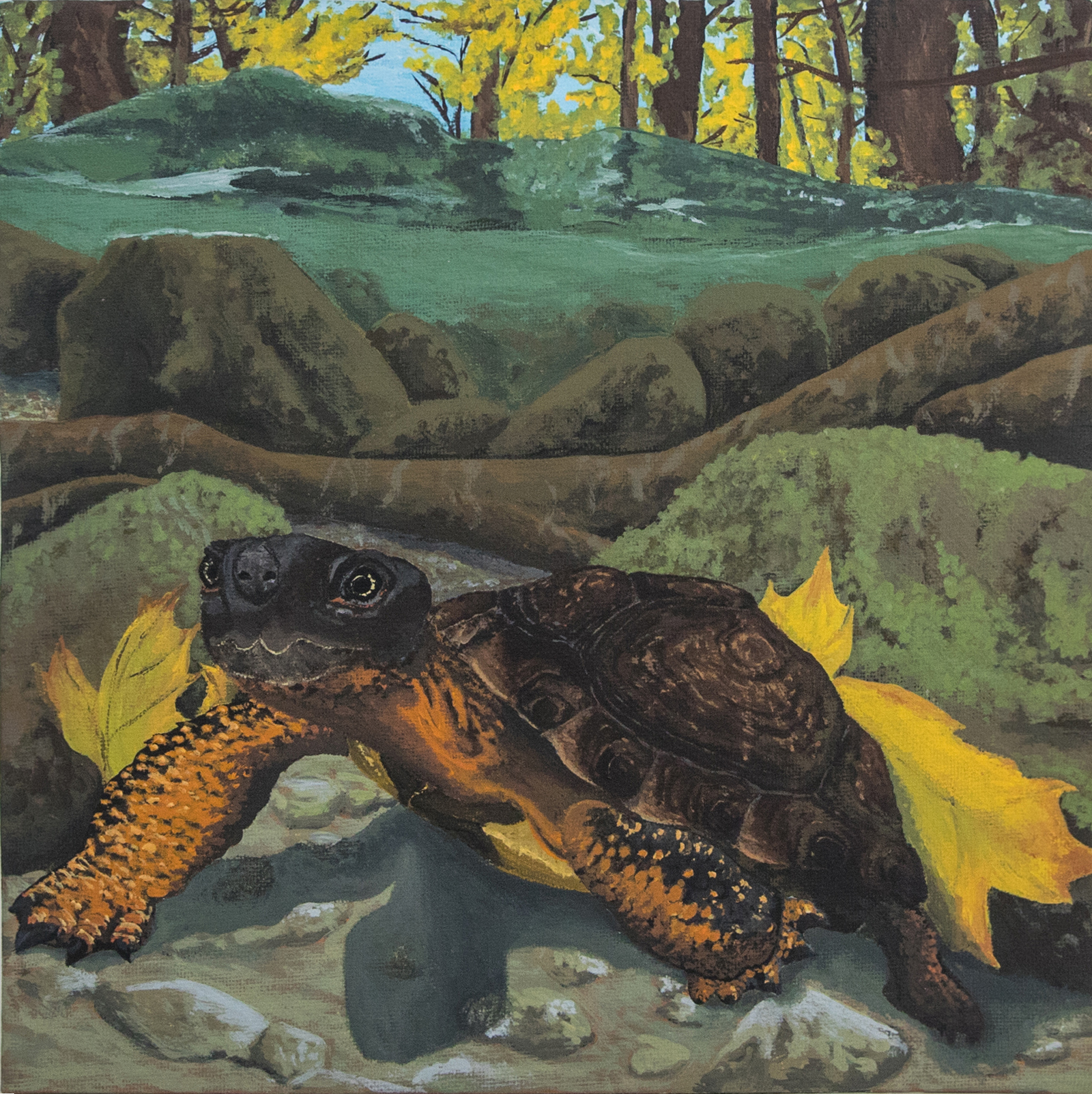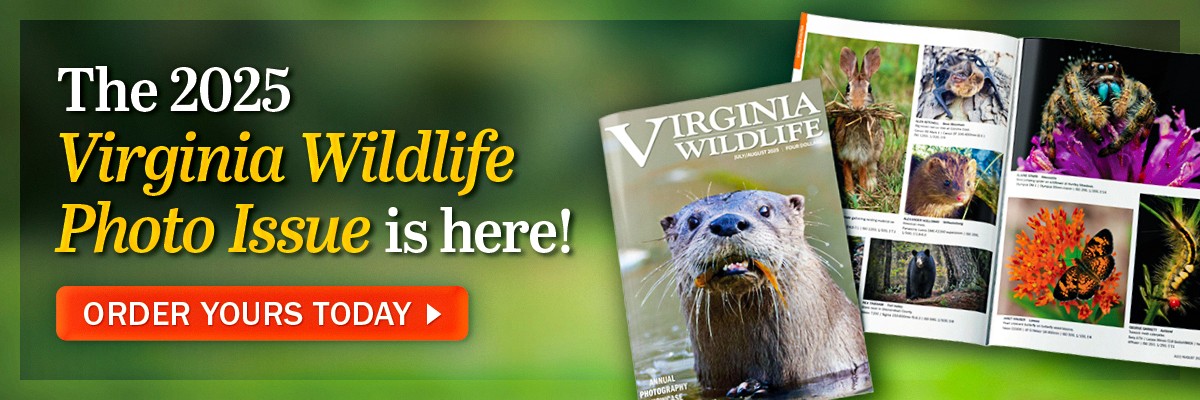By Molly Kirk/DWR
The Virginia Department of Wildlife Resources (DWR) is pleased to announce the winner of its inaugural Restore the Wild Artwork Competition. A panel of judges chose Miranda McCleaf’s acrylic painting depicting a wood turtle in its aquatic habitat as the artwork to be used throughout 2021 to help promote Restore the Wild’s mission.
“I was excited to depict this species that is lesser known but certainly not lesser deserving of thriving in its habitat,” said McCleaf, who lives in Berryville, Virginia. “Many threats face wood turtles and other similar species of concern in Virginia, and I am honored that my art was chosen to represent this important conservation message.”

A lifelong turtle devotee, McCleaf serves as the Field Project Manager for The Turtle Room, an education, conservation, and research non-profit organization dedicated to advancing the survival of the world’s turtles and tortoises. She also volunteers at the Blue Ridge Wildlife Center. “I chose to paint the wood turtle in its aquatic stream habitat because I feel very privileged to be able to experience this for myself,” McCleaf said. “Spending time in this cool mountain stream habitat is in itself enough to have a good day, but the feeling when I notice the quiet, cryptic reptile slowly going about its daily life is absolutely amazing.”
Virginia has more than 900 species of wildlife whose numbers are in decline mostly because of impacts to their habitat—natural areas that provide necessary food, water, and shelter. DWR is the lead agency in Virginia for the conservation of wildlife and wildlife habitat. DWR’s Restore the Wild initiative allows DWR to expand the work the agency does to preserve, establish, and maintain vital wildlife habitat areas and keep Virginia’s wild places wild. Memberships and donations to Restore the Wild, along with revenue raised with the Run for the Wild virtual 5K run/walk, provide funds directly for DWR habitat projects.
For the first year of the Artwork Competition, 28 entries were received from all over the state. “I was enthralled by the collection of entries we received,” said Jessica Ruthenberg, a DWR watchable wildlife biologist and Restore the Wild representative who served on the judging panel. “It was a celebration of turtles! The diversity of media used to illustrate turtles was remarkable. We had everything from a mixed media wood burned piece to watercolor and acrylic paintings to colored pencil drawings to a quilted textile work and digital renderings. It was truly a sight to behold and an honor and pleasure to judge. I had so much fun viewing all of these works, but it was not an easy decision to select just one winner!”
Restore the Wild’s Artwork Competition called for submissions from the public that reflect Restore the Wild’s mission to restore and create natural habitats vital to the survival of Virginia’s wildlife. The subject focus of 2021’s artwork is imperiled terrestrial, freshwater and estuarine turtles, and artists were asked to select from six specific turtle species that are listed as Species of Greatest Conservation Need (SGCN) in Virginia’s Wildlife Action Plan. Judges evaluated the works not only on their artistic merit, but also on their precision in illustrating the species’ physical characteristics and habitat.
“What stood out about the winner was not only the accuracy of the turtle species, but also of its habitat,” said Artwork Competition judge Susan Watson, a wildlife information biologist with DWR. “The other standout characteristic was the unique perspective and angle of the turtle underwater, which is critical habitat for this species. With this unique perspective, it still incorporated all of the habitat types that are critical to this species, such as the clear stream water along with a healthy surrounding forest. There were fall leaves and logs underwater, and there was a background of fall trees.”
Lynda Richardson, competition judge and DWR Art Director, described the winning artwork as a fantastic depiction. “This acrylic painting was created with a matte finish appropriate for an underwater scene,” said Richardson. “I love the perspective, composition, attention to detail, and use of color. Yellow and orange draw the viewer’s eyes first to the turtle and then up to the trees, drawing your eye through the entire painting. Beautifully shaped rocks covered in moss are very well done and the water above is very well crafted. Incredible work!”
The first year of Restore the Wild raised more than $25,000 in membership funds, donations, and Run for the Wild registrations. The funds were used immediately to support six DWR habitat projects encompassing more than 180 acres throughout the state, directly benefiting habitat for not only for Restore the Wild’s 2020 and 2021 focal species, the rusty patched bumble bee and red-cockaded woodpecker, but also for many other species of wildlife. McCleaf’s artwork will be used to help promote Restore the Wild’s mission throughout 2021. “[Restore the Wild’s] mission mirrors what I care about the most, which is restoring habitat so that wildlife can thrive in its natural state,” said McCleaf.
Find out more about DWR’s Restore the Wild initiative and consider becoming a member or making a donation to help restore and maintain essential habitat for Virginia’s wildlife.



